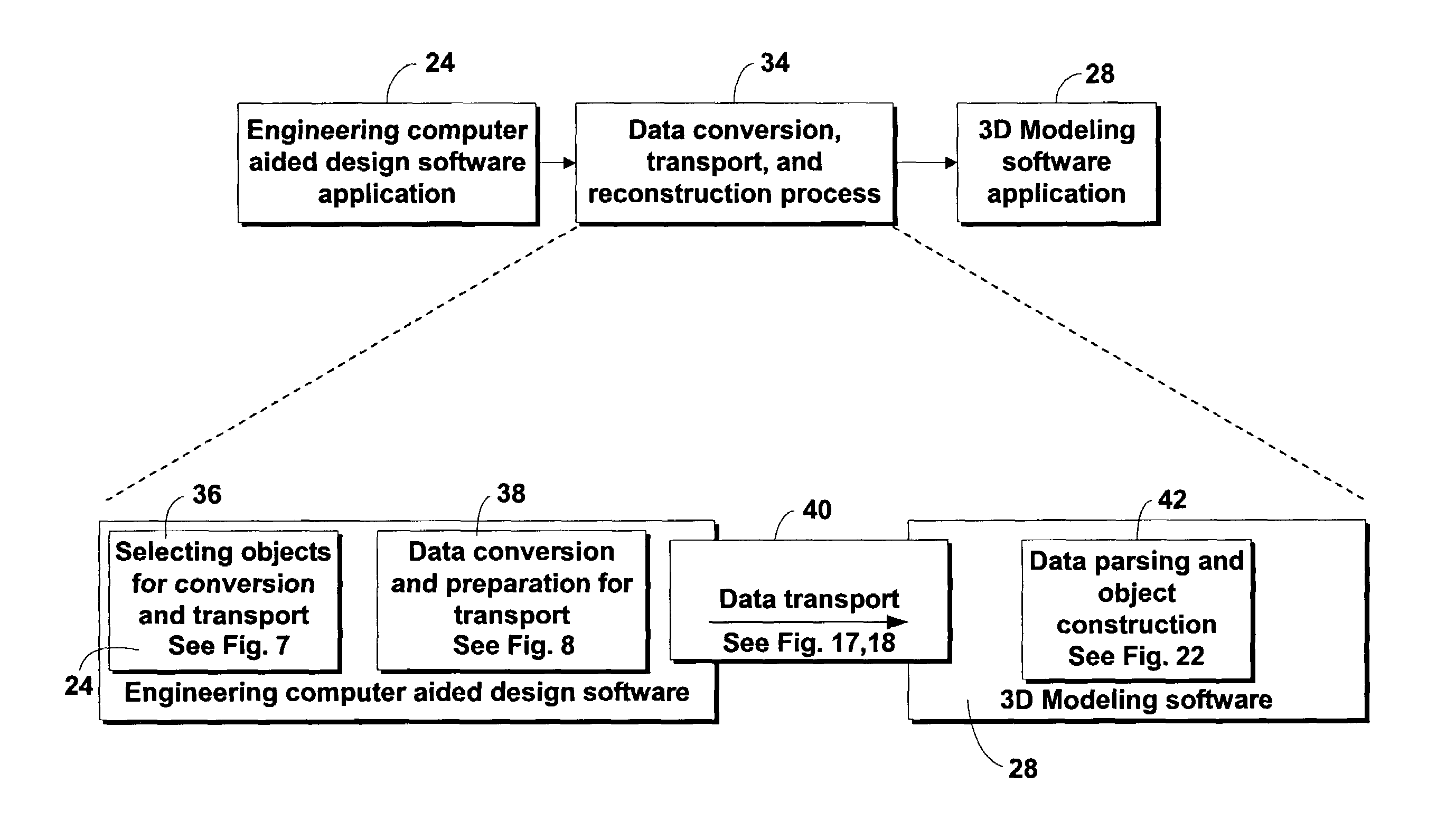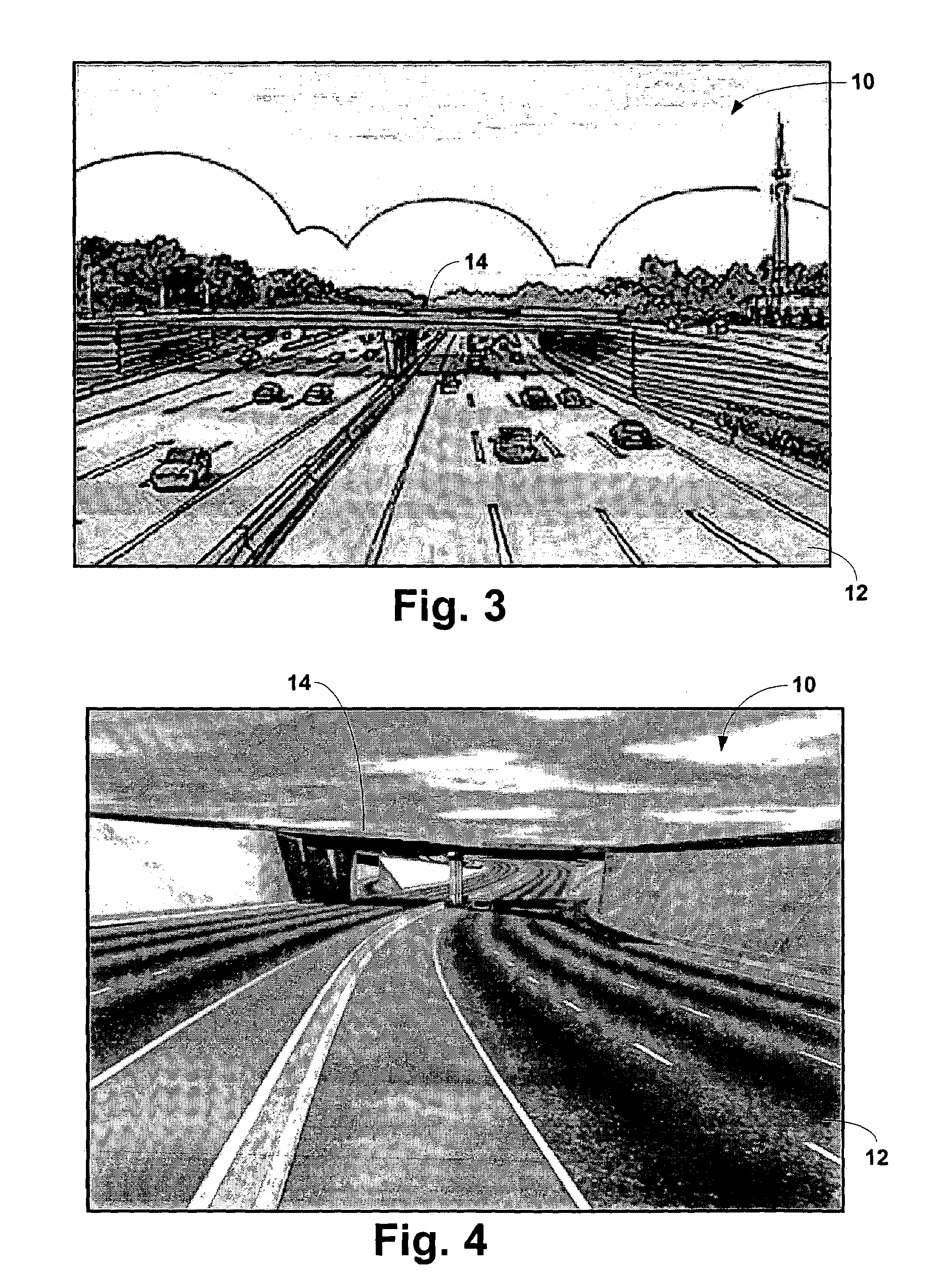Method and system for converting engineering data into 3D modeling data
a technology of engineering data and modeling data, applied in the direction of static indicating devices, instruments, image generation, etc., can solve the problems of lack of true dimensional accuracy, difficult visualization, and expensive artist's renderings, etc., to achieve quantitatively accurate representation or duplication of elements, easy to be animated and/or merged, and easy to use
- Summary
- Abstract
- Description
- Claims
- Application Information
AI Technical Summary
Benefits of technology
Problems solved by technology
Method used
Image
Examples
Embodiment Construction
[0049]Referring now to the drawings in more detail and initially to FIG. 1, numeral 10 generally designates a design or project. The project 10 is a sunken roadway 12 with an overpass 14. In FIG. 1, the project 10 is illustrated by way of a traditional triangulated irregular network (“TIN”) model. As discussed above, a TIN consists of a plurality of non-overlapping triangles 16 which connect a plurality of points 18. Each of the points 18 has data associated therewith representing the points X, Y and Z coordinates. As is illustrated in FIG. 1, as the change in the terrain of the design 10 increases, the sizes of the associated triangles 16 decreases to permit the associated triangles 16 to represent the terrain changes. Consequently, as the level of changes in the terrain increases, the amount of data associated therewith increases. Each of the triangles 16 are wholly independent from one another in the respect that altering the orientation of one triangle does not change the orient...
PUM
 Login to View More
Login to View More Abstract
Description
Claims
Application Information
 Login to View More
Login to View More - R&D
- Intellectual Property
- Life Sciences
- Materials
- Tech Scout
- Unparalleled Data Quality
- Higher Quality Content
- 60% Fewer Hallucinations
Browse by: Latest US Patents, China's latest patents, Technical Efficacy Thesaurus, Application Domain, Technology Topic, Popular Technical Reports.
© 2025 PatSnap. All rights reserved.Legal|Privacy policy|Modern Slavery Act Transparency Statement|Sitemap|About US| Contact US: help@patsnap.com



